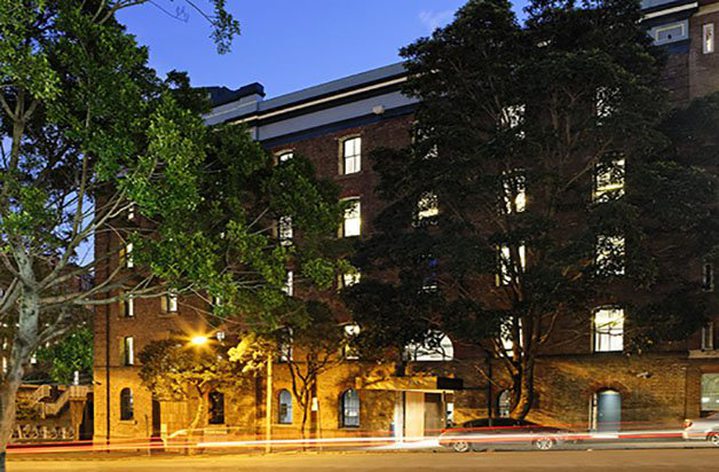Social Media Inspires Hotel Design

While many hoteliers have adapted to the needs of smartphone users and social media aficionados, some have moved considerably beyond mere social media profiles and free Wi-Fi.
A new breed of hotels is being designed with Twitter, Instagram and other social media platforms foremost in mind. Beyond aesthetics, these properties also are putting social media at the very heart of operations.
For instance, the 184-room Sol Wave House Hotel became the “first ever Tweet Experience Hotel in the world” when it opened in Majorca, Spain, in summer 2012, according to a press release.
The hotel displays its Twitter handle @SolWaveHouse and hashtag #SocialHotel around the property.
“We merge the real and virtual worlds to create a totally new experience,” the property’s website proclaims. “We connect the hotel and everyone in it to their own social community where they can meet, interact, have fun, compete, experience, flirt, tweet and much, much more.”
Simon Geraghty, founder of Dublin-based digital marketing agency DotDash, said the property, which features Twitter-themed rooms and unique drinks at #TwitterPoolParty events, skews toward younger demographics. Guests can even request refills to their minibars using #FillMyFridge.
Meanwhile, the 90-room 1888 Hotel, which reopened this July in Sydney following a two-year overhaul, approached design through the social media lens of photo-sharing platform Instagram.
“Every angle, detail and element of the hotel was looked at through the prism of an Instagram photograph,” said Robert A. Rauch, president of San Diego-based hospitality management and consultancy group R. A. Rauch & Associates.
Repeated requests for interview with 8Hotels Collection, which operates the 1888 Hotel, were not returned by press time.
Digital meets design
“The hotel sector, like most businesses, is trying to figure out how to better cater for the digital elite and create real points of difference and value for customers. This manifests in a spectrum of activity from using technology’s convenience right through to incorporating the experiential elements in the hotel design,” Geraghty said.
Meliá Hotels International, parent company of the Sol Hotels brand, spent a lot of time studying how best to mesh social media with the property’s design and infrastructure, said Marco Fanton, social media director at Meliá Hotels International.
“Hotels invest a great deal in infrastructure, but because social media is changing so fast and is so new, one needs to understand and learn from patterns before getting into infrastructure investments.
“It is like a new format of conversation with the guest. If you buy into this new type of connection, then it is a very interesting experience, and equally interesting will be to see how these new ideas help future considerations of design. We have received already feedback from guests, and we are constantly learning. The concept generates a different relationship between guest and staff. Really, the concierge was the first social community manager. The difference is that today the conversation is transmitted differently,” he added.
Maz Nadjm, founder of London-based social media strategy company SoMazi, added that the “décor for this new breed of hotel also is different. They’re more hip, and the rooms are not so large.”
“Guests are happily giving up space in exchange for more social media, so hotels have not only made changes to Wi-Fi capabilities but also to hotel design, usually most noticeably in the reception and public areas. This is all an indication of what a certain demographic is after,” he added.
Hotel companies have even asked for help. Geraghty pointed to New York-based Tablet Hotels, which ran an online competition in 2012 looking for designers, architects and visionaries to present their vision of the perfect social hotel.
“Crowdsourcing ideas are a great way to involve your customers,” he said.
Rauch is interested in the link between marketing and social media-inspired design.
“Clever hoteliers are already incorporating social media into the design of hotels to attract, engage and retain guests. This leveraging of social media platforms, already in widespread use by consumers, enables differentiation in an ever-tightening market. And the use of social media makes the guests a continual part of the marketing of the property,” he said.
“What is particularly compelling about such an approach is its authenticity,” Rauch continued. “Consumers have near unlimited access to information to make a destination selection. What better strategy than to have a constant stream of posts and stunning photography directly from them in near real time?”
Constant, too, should be hoteliers’ engagement on the platforms inspiring their properties’ designs, Geraghty said. This means around-the-clock monitoring that factors in followers from all time zones.
“The key to the success of this approach is solid fostering of the service across all time zones and clear lines of communication between the team monitoring the Twitter account and those on the ground with the local knowledge and who can respond,” he said. “Any guest in an on-going dialogue needs to have that conversation seen to by the same agent.
“An actual concierge wouldn’t just walk away from a guest mid-conversation,” he said.





